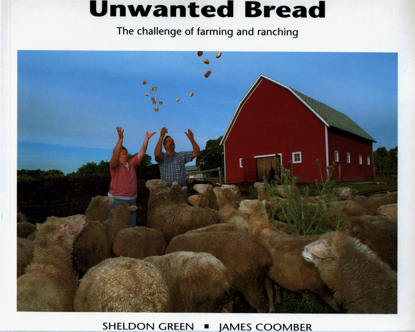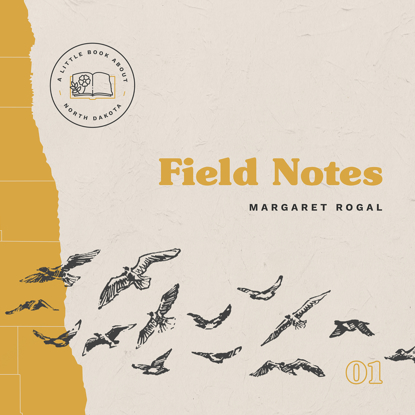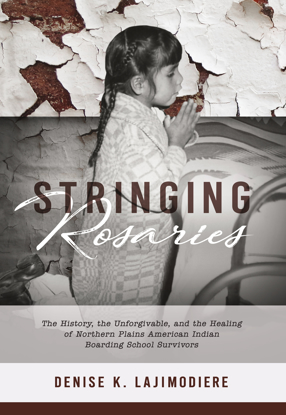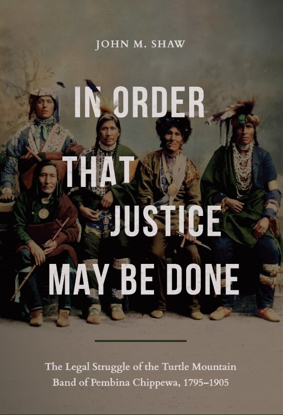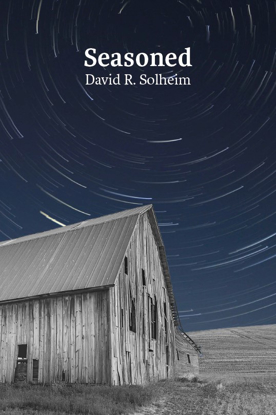Products tagged with 'north dakota'
Unwanted Bread
Farmers talk of their frustrations and opportunities in this personal glimpse into rural life today. Readers will discover insights into the expensive, complicated and often emotional business of farming and ranching. "One way to understand what is happening in farming today is to listen to those who are involved in it," write Green and Coomber. That is what they do, and invite their readers to do, in Unwanted Bread. Here is the story of farming and ranching today as told by farmers and ranchers, along with astute commentators who know the country well. Visually striking, thought-provoking photographs accompany the interviews and essays. "If we could sit down with a farmer over coffee and listen to his or her story," Green and Coomber say, "we'd begin to understand the challenge farmers are facing today." So pour yourself some coffee, and help yourself to Unwanted Bread.
By:Sheldon Green and Jim Coomber
Field Notes
In April 1909, twenty-two-year-old Robert Silliman Judd, born and raised in Bethel, Connecticut, climbed aboard a train bound for the northern plains where his uncle Elmer farmed in Cando, North Dakota. Robert roamed the prairie with Elmer for six months, observing and collecting birds during the great spring migration.
Decades later, Robert’s granddaughter Margaret Rogal discovered his notebooks filled with detailed records of birds, nests, and eggs, along with his letters and summaries portraying his love for North Dakota and the thousands of migrating birds, alighting, it seemed, at his very feet.
Margaret responded to the trove of documents with poetry; each sample herein is an exploration of Robert’s experience.
A Little Book about North Dakota, Volume 1
6"x 6", paperback, 120 pages, color illustrations throughout
Stringing Rosaries: The History, the Unforgivable, and the Healing of Northern Plains American Indian Boarding School Survivors (hardcover)
Denise Lajimodiere's interest in American Indian boarding school survivors’ stories evolved from recording her father and other family members speaking of their experiences. Her research helped her to gain insight, a deeper understanding of her parents, and how and why she and her siblings were parented in the way they were. That insight led her to an emotional ceremony of forgiveness, described in the last chapter of Stringing Rosaries.
The journey to record survivors’ stories led her through the Dakotas and Minnesota and into the personal and private space of boarding school survivors. While there, she heard stories that they had never shared before. She came to an understanding of new terms: historical and intergenerational trauma, soul wound.
Stringing Rosaries presents a brief history of the boarding school programs for Indigenous Americans, followed by sixteen interviews with boarding school survivors, and ending with the author's own healing journey with her father.
Hardcover, 332 pp., 41 black and white photographs, updated listing of more than 400 US boarding schools by state, appendix, bibliography, and index.
Dust Yourself Off: The Gravel Road to a Good Life
Dust Yourself Off: The Gravel Road to a Good Life is the true story of a farm woman in 1940s/50s North Dakota who recovered from a series of shocks and tragedies – and the surprising ways in which she did that. “This project began because I wanted my kids and grandkids to know their grandmother,” said the book’s co-author Tom Sandhei of his mother, Muriel. “She was a remarkable woman.” After Sandhei took the story as far as he could on his own, he teamed up with Tricia Velure, a personal historian and writer from the neighboring town. “Tom and I unknowingly grew up on farms less than 20 minutes from each other in North Dakota, 30 years apart,” said Velure. “Decades later, we met in the Twin Cities, where we lived 10 minutes apart. We were meant to meet and write this story together!”
Dust Yourself Off chronicles Muriel’s life in Fort Ransom, North Dakota, known as “Little Norway” for its forested hillsides above the Sheyenne River Valley and predominantly Norwegian settlers. Readers follow Muriel and her family through farm life during the settlement period, World War I, Great Depression, World War II, and the 1950s. While the co-authors describe Muriel as a quintessential Norwegian American farm girl in North Dakota, she was forced to leave home at age 19. Death and tragedy visited her regularly in her 20s and 30s, when time and again she challenged the traditional norms of what it meant to be a farm woman in her day. Muriel’s quiet yet bold courage helped create this touching family story, rich in historical details and local color.
Velure never met Muriel, who died at age 82 in 2004, but she calls Muriel a “bonus grandmother” and believes readers will feel the same affinity. “This book will appeal to readers who enjoy farm and small-town stories, Norwegian American history, and inspiring stories of everyday women. If you wish you knew your grandparents’ life story, this is a book for you.”
About the Authors
Tricia Velure is a personal historian who helps elders share their life stories with their families. She grew up on her family’s cattle and small grains farm near Kathryn, North Dakota, and earned degrees in English and history from Valley City State University and a master’s degree in history from North Dakota State University.
Tom Sandhei is a retired school administrator who grew up on his parents’ and grandparents’ farms near Fort Ransom, North Dakota. He graduated from Valley City State College, began teaching, then earned a master’s degree in elementary school administration from North Dakota State University. His career in education spanned almost 40 years. Velure and Sandhei have lived in suburban Minneapolis/St. Paul since the 1990s.
In Order That Justice May Be Done: The Legal Struggle of the Turtle Mountain Band of Pembina Chippewa, 1795-1905
Tribal lands in tribal hands restrained the pursuit of profit. When the cultural identity of the Turtle Mountain Band of Pembina Chippewa was challenged by European Americans—who conceived of progress in terms of cultivated farmland—a tribal-federal conundrum occurred. Historian John M. Shaw untangles the culturally and legally contested concepts of land and its uses and ownership, providing a dynamic legal genesis of the Turtle Mountain Chippewa and their intentional action for change. Shaw presents a crucial analysis of federal policy and Native American resistance.
“Shaw systematically informs the reader of historical context and lays out the complex cultural influences—the nucleus of an emerging nation—of the Pembina Chippewa, providing unique insights into historical, legal, and political struggles. An overarching theme is the contrast and comparison of Indigenous and Western worldviews relative to international diplomacy. Shaw’s laser focus presents a critical and authentic analysis of social, economic, political, and cultural events that enveloped the Pembina Band of Chippewa and the United States of America.”—Les LaFountain, Tribal Educator and Historian; former Turtle Mountain Band of Chippewa Tribal Council Representative; former Legislative Assistant to the United States Senate Indian Affairs Committee
“In Order That Justice May Be Done is an excellent history of the struggle experienced by the Turtle Mountain Band of Chippewa to gain recognition as a tribe and to gain control of their homeland. The documented efforts of Chief Little Shell and Attorney John Bottineau deserve to be recognized and understood.”—Carol A. Davis, Senior Associate Tribal Nations Research Group; Turtle Mountain Community College Co-founder and Second Interim/Acting TMCC President
LCCN: 2022951183
ISBN: 978-1-946163-56-1
6" x 9"
440 pp., paperback
black & white photos and maps
bibliography and index
Tribal-Federal Relations | History 19th Century | Indian Reservations—Law and Legislation
About the Author: John M. Shaw grew up where George Washington led the Continental Army across the Delaware River and surprised the Hessian garrison at Trenton, New Jersey, on Christmas day, 1776. One of John's earliest childhood memories recalls his parents bundling him up on Christmas mornings to watch the annual reenactment. This tradition sparked his lifelong interest and passion for history, culmininating in an MA in American Indian Studies and a PhD in History, both from The University of Arizona.
In graduate school, a colleague informed John about a compelling microfilm of an eloquent prayer, address, and legal brief on behalf of the Turtle Mountain Band of Pembina Chippewa. Compiled by Métis tribal citizen and attorney John B. Bottineau, these inspiring documents provided a unique Indigenous perspective on the injustices of federal Indian policy. The tribe's legal struggle for land, sovereignty, and justice derived from the power to narrate their own side of the story through articulate chiefs and delegations, confirming that North Dakota's most populace Indigenous community remain a powerful people with a compelling history.
John contributed multiple entries to Making it in America: A Sourcebook on Eminent Ethnic Americans (2000) and The Encyclopedia of United States-American Indian Policy, Relations, and Law (2008), as well as several book reviews for UCLA's American Indian Culture and Research Journal and the New Mexico Historical Review. He has taught Native American and U.S. History courses for the departments of American Indian Studies, American Multicultural Studies, and History at The University of Arizona (1996–2003), Minnesota State University Moorhead (2004–2005), and Portland (Oregon) Community College (2005–present).
Seasoned
It seems that everyday life is dotted with moments that one wants to remember and share. When the circumstances and situations of my life provide me such moments, I try to make notes or a rough draft of a poem as soon as possible. Such events might be coffee with a friend, a walk around a park, a weekend camping trip, cleaning the house, a family celebration, or vacation travel. Sometimes I read, hear, overhear, or glimpse similar events of other people. In those cases, I imagine the cause or result of a situation of which I don’t have actual knowledge. After a period of informal meditation (usually days or weeks, but sometimes years) I revise the draft into a poem to share my experience, insight, discovery, or surprise. My lifelong goal as a writer is to have my readers, at least for a moment, perceive something as closely as possible to the way I perceived it. This collection of my recent work features the perceptions of a post-retirement guy paying attention to the current events of his life and times, and often commenting on his discoveries of how he and the world have changed through the seasons of the seventy-some years of his existence.
Available early December 2023
David R. Solheim, the North Dakota Statehood Centennial Poet, has published writing in more than two dozen periodicals and had work in several anthologies. He wrote two poetry chapbooks published by Dacotah Territory. His four previous books of poetry and a literary travelog related to Thoreau’s 1861 visit to Minnesota are available via buffalocommonspress.com. Solheim is an English Professor Emeritus of Dickinson State University, where he taught for almost 30 years, and, thanks to the late Larry Woiwode, an Emeritus Associate Poet Laureate of North Dakota. He holds degrees in English and creative writing from Gustavus Adolphus College, Stanford University, and the University of Denver. Early in his career, he was a temporary faculty member at NDSU and conducted numerous programs for the North Dakota Humanities Council (now Humanities North Dakota) and the ND Council on the Arts. After residing in Minnesota for the last 10 years, he and his wife, Dr. Barbara Laman, also an Emeritus English Professor of DSU, have resettled near family members in the Portland, Oregon, area. Between them, Dave and Barbara have five adult children and seven grandchildren.
ISBN: 978-1-946163-52-3
Page Count: 78
Paperback
Publication Year: 2023
























